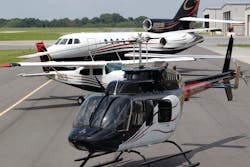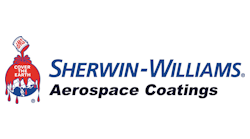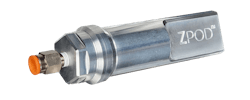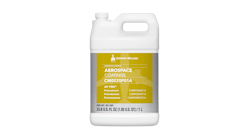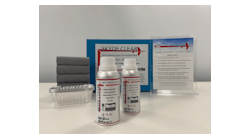MRO Operations: Creative Paint Schemes
How often have you gazed across the airport ramp or walked down a flight-line at one of the many popular airshows and said now that’s a cool looking paint scheme. We know the work that goes into one of those striking multi-color paint schemes, and it generally begins by the aircraft owner or operator conceptualizing a preferred appearance, or in some cases a desire to represent a company brand. These conceptual ideas are often times placed into reality through a paint scheme designer.
One such company
Craig Barnett, CEO of Scheme Designers Inc., having designed more than 10,000 paint schemes for aircraft worldwide, says, “Most clients for whom we create custom paint schemes do not like to strongly brand their aircraft. However, a degree of branding does add a personal touch, a reminder of one’s successes and achievements, and when used for business, a strong message to passengers that they are working with a successful company, with significant resources.”
Barnett goes on to explain the most common way of showing a corporate brand is by the application of a small logo where it counts – next to the entrance door of a jet for example. Here, the brand impacts the passengers, but is less identifiable from a distance to common observers. Other owners like the subtle approach, incorporating the design into the tail-section aft of the registration number which may have meaning to the owner yet retains a degree of anonymity. At times a design is adapted across a varied fleet of aircraft, requiring a lot of thought and consideration as it’s applied to each aircraft.
The result of a design company’s creativity is a comprehensive set of schematic design drawings for the paint facility to accomplish the desired appearance. Capital Aviation Inc., an FAA certificated repair station located on Willey Post Airport near Oklahoma City, is one of many paint shops with experience in the application of attractive paint schemes. I spoke with Scot Webber, executive vice president of Capital, about the business of painting aircraft these days. Webber began by saying, “Aircraft painting has remained pretty consistent throughout the years. Aircraft need to be protected against the elements and paint is a major part in maintaining an aircraft for the protection against corrosion.”
Capital’s paint organization consists of six paint supervisors and approximately 40 painters and aircraft maintenance technicians. It uses the traditional in-house on-the-job training program for paint staff, and staff may attend any necessary specialized training offerings by paint manufacturing companies.
Going green
Webber also feels the process of paint application in many ways has not changed over the years and says, “Really the only trend that we see is with the paint materials going “Green,” getting away from the chromates. Also we are seeing more paints go “High Solids” with a lower volatile organic compounds (VOC) content. We don’t consider the move to newer paint systems as trends as much as a shift driven by the Environmental Protection Agency (EPA) and the overall desire by industry to use safer and environmentally friendly paint systems.”
Capital has used an eco-friendly paint stripper called SunSetStrip manufactured locally by WEBBERTEK for more than three years and says its paint shop has become completely hazmat free. He goes on to say this paint stripper has also allowed it to remove the existing paint from an aircraft more completely and in less time.
Application of the design
When asked what some of the more interesting paint projects have been Webber shares several. He says, “We painted a Challenger Jet with a solid red base and silver stripes. The challenge on this aircraft was to keep the red consistent throughout the entire aircraft. We also painted a P-51 race aircraft which required a lot of attention to ensure the paint was exactly prepared in order to make sure it stays on an aircraft operating in such a rough and tough environment that racing provides.” Other projects were a Sky Raider for the Oklahoma Museum of Flying which required duplication a 1950’s paint scheme, and a Falcon 50 owned by NASCAR favorite Greg Biffle.
Capital was provided a full set of schematic design drawings for the Biffle Falcon from Scheme Designers and Webber says, “Painting a multi-colored design to exacting measurements requires attention to detail. It’s very important to have everyone communicating with one another, so everybody is on the same schedule. As an example you need to have a plan of action for each color and where to apply them on the aircraft. Individual colors are done one at a time, even when a paint scheme may have colors overlapping one another. You apply the first color and when dry, re-mask the plane for the next color, apply the next color, and repeat the process until you are finished.” Webber says, “If you have just one painter out of sync it can mess up your day real fast.”
Many times the aircraft owner/operator will choose the type of paint system they want applied. Other times a customer just wants a quality paint used and the paint facility will work with the customer to choose a system based on the type of aircraft, type of operation, and cost.
In the case of the Falcon 50, the Sherwin-Williams’ paint system was used. The entire paint system consisted of several products each having its own individual step; Chrome Hazard Free Primer, High Solids Epoxy Surfacer, Fill Bond, Jet Glo Conventional Matterhorn White, Acry Glo Conventional Metallic Seminole Red, Black Velvet and Windfield Bronze, Acry Glo Conventional Aviation Gray, and SKYscapes Clearcoat. Webber says start to finish, the Falcon paint process took approximately four and a half weeks to complete using a 12-person crew.
Webber shares his thoughts on paint system selection. “Ideally customers will choose a paint system we are accustomed to working with.” He says, “Being familiar with the paint system can be a big advantage for any paint facility. The Sherwin-Williams system used on the Falcon 50 is very user friendly, we’ve been using it for a long time, and our painters are very comfortable using it.”
More information can be found at: www.schemedesigners.com, www.capitalaviation.com, and www.swaerospace.com.
